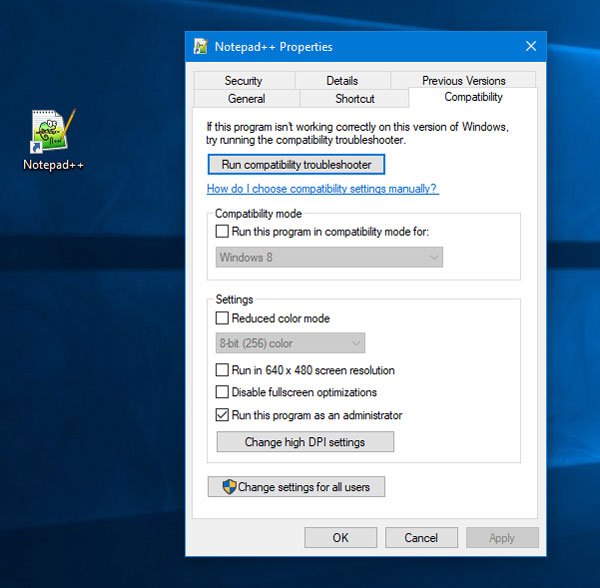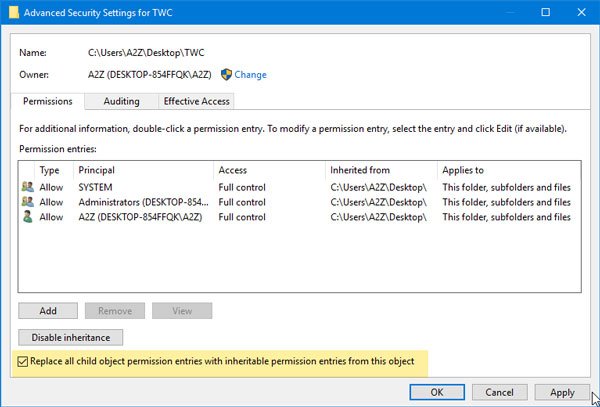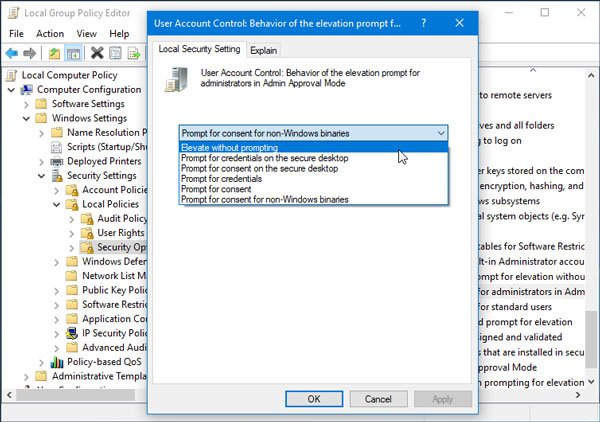If you try to run a program, open a folder, or delete a file and you receive a message – Createprocess Failed, Error (740), The requested operation requires elevation on your Windows 11/10 computer, here are some simple troubleshooting suggestions that can help you fix the problem.
Fix The requested operation requires elevation, Error 740
If you receive Createprocess Failed, Error (740), The requested operation requires elevation error message while opening a folder or program or deleting files from the Temp folder in Windows 11/10, here are some solutions you should check.
- Run program always as administrator
- Change folder permission
- Disable UAC
- Select Elevate without prompting
1] Run the program always as administrator

There are certain apps, which require administrator privilege to be opened. If you are getting this error message while opening an app on your computer, you can try opening this always as administrator. However, this solution may not work if you are already using an administrator account or a member of the administrator group.
To get started, right-click on the app and go to Properties. After that, switch to the Compatibility tab and tick the checkbox that says Run this program as an administrator.
Now click the Apply and OK buttons.
Related: Error: 740, Elevated Permissions are required to run DISM
2] Change folder permission

If you are getting this error while opening a folder, this is what you should do. Right-click on the folder and select Properties. Then go to the Security tab and click the Advanced button. Make a tick in the checkbox that says Replace all child object permission entries with inheritable permission entries from this object.
Following that, click the Apply and OK button.
3] Disable UAC
The UAC or User Account Control settings might be responsible for getting this error. Therefore, you can disable the User Account Control and verify whether it is causing the issue or not. For that, search Change user account control settings in the Taskbar search box. Next, drag down the blue bar to the bottom and click the OK button to save your change.
4] Select Elevate without prompting in GPEDIT

In Group Policy Editor, there is an option, which helps you disable the UAC prompt. You should try disabling this setting and check whether it solves the issue or not. For that, open Local Group Policy Editor. You can press Win + R, type gpedit.msc and hit the Enter button. Following that, navigate to-
Computer Configuration > Windows Settings > Security Settings > Local Policies > Security Options
In the Security Options folder, you can find a policy called User Account Control: Behavior of the elevation prompt for administrators in Admin Approval Mode. Double-click on it to open its options.
From the drop-down menu, select Elevate without prompting and click the OK button to save your change.
I hope something helps you.
Leave a Reply